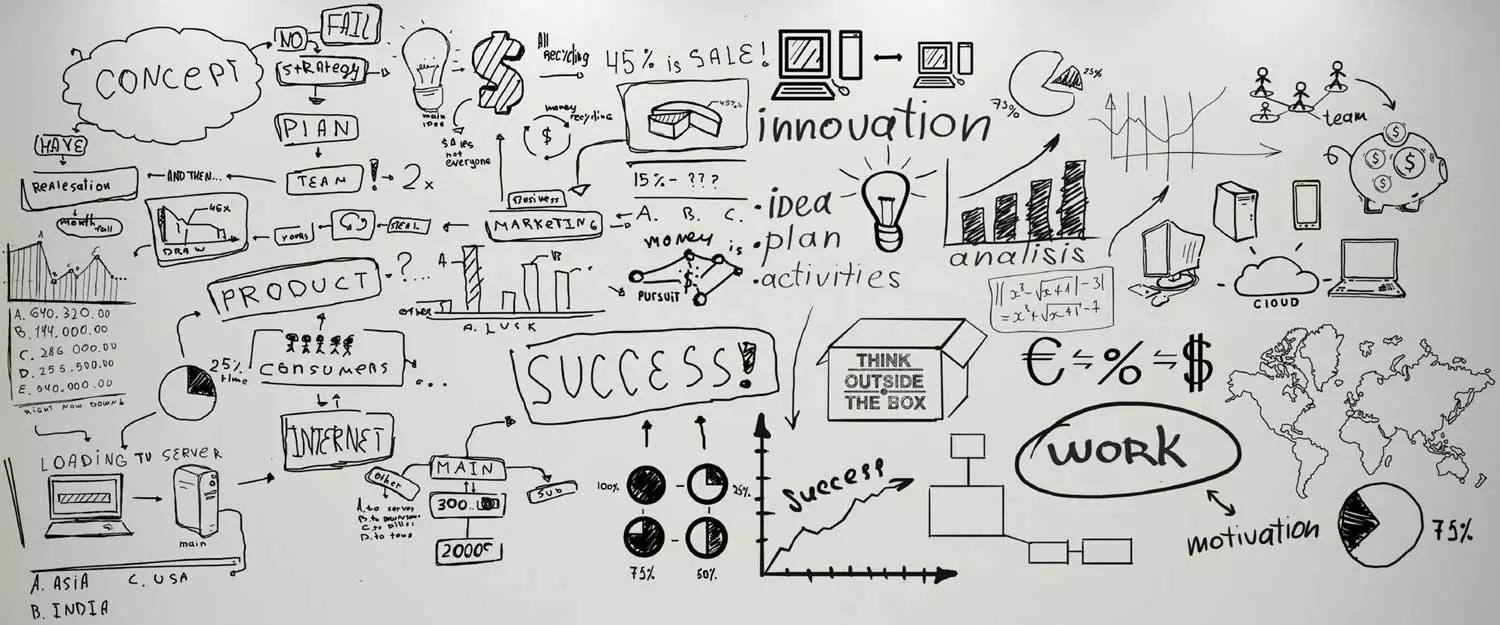Content Marketing Best Practices for Maximum Engagement: How to Develop an Effective Strategy That Drives Results
Mastering content marketing best practices involves combining smart strategy, deep audience understanding, and sharp data analysis to boost engagement and achieve your business goals. Here at Astound Media, we’re about using proven methods to help small businesses, entrepreneurs, and non-profits tell compelling stories that genuinely connect with their audience and bring in quality leads. This guide serves as your comprehensive roadmap to understanding core principles, mastering user intent, crafting killer content, refining your SEO and tech, effectively spreading the word, measuring what truly matters, and even gaining insights into the future with AI.
“Effective content marketing isn’t just about creating content; it’s about creating connections. It’s about understanding your audience so deeply that you can anticipate their needs and provide solutions before they even ask.” – Jorge Leger, Founder and Digital Marketing Consultant, Astound Media.
What Is Content Marketing and Why Is Engagement Crucial for Success?
Content marketing is the art and science of creating and sharing valuable, relevant content to draw in and keep a specific audience, all while boosting brand recognition and inspiring action. When you serve up content that’s genuinely informative or entertaining, you build trust, encourage people to come back for more, and get them talking and sharing – the secret sauce for lasting growth. Making engagement a top priority means every blog post, video, or infographic doesn’t get seen; it sparks interaction, builds loyalty, and drives conversions. Adhering to content marketing best practices ensures your efforts are focused and effective.
The Role of Content Marketing in Attracting and Retaining Customers
This study underscores how vital content marketing is for bringing in and holding onto customers by delivering valuable, relevant content that hits the mark on audience needs. It highlights how consistent, top-notch content builds trust, establishes credibility, and fosters long-term loyalty, paving the way for repeat business and brand advocacy.
This research directly supports the article’s arguments about content marketing, which aims to attract and retain audiences with valuable and engaging material.
How Does Content Marketing Improve Audience Interaction and Retention?

Content marketing supercharges interaction and retention by ensuring every piece of content is perfectly aligned with what your audience needs and wants, fostering deeper connections and encouraging repeat visits through:
- Personalized Experiences – Tailoring topics and formats to specific audience segments makes content hit harder and invites conversation.
- Community Building – Welcoming comments, shares, and user contributions turns passive viewers into enthusiastic brand champions.
- Continuous Value – Consistently delivering fresh, high-quality content keeps interest piqued and reduces audience drop-off.
These strategies cultivate ongoing engagement, setting the stage for tracking the specific metrics that truly define success. Implementing these content marketing best practices is key.
What Are the Key Metrics to Measure Content Engagement?
Key metrics are your compass for understanding how audiences interact with your content, providing clear signals for optimization and ROI analysis. Keeping a close eye on these indicators empowers marketers to sharpen their strategies and allocate resources wisely.
Tracking these metrics shines a light on content that truly drives engagement and pinpoints areas ripe for improvement, naturally leading us to the impact of user intent on effectiveness.
How Does User Intent Influence Content Marketing Effectiveness?
User intent refers to the underlying goal someone has when they’re reaching for something, and it dictates the best format, tone, and depth for your content. When your content aligns perfectly with informational, commercial, or transactional intent, it becomes incredibly relevant, boosts click-through rates, and leaves users feeling satisfied. For example, how-to guides nail informational intent, product comparison pages speak to commercial interest, and direct purchase pages cater to transactional needs. Each tailored approach elevates engagement by fulfilling specific audience objectives.
How Do You Understand Your Audience and Map User Intent for Better Content Targeting?
Getting a handle on your audience means blending demographic and psychographic research with user intent mapping to deliver content that truly resonates at every step of their journey. By digging into behaviors, preferences, and search queries, marketers can craft targeted experiences that guide prospects from initial awareness all the way to becoming loyal advocates. This is a fundamental aspect of content marketing best practices.
What Are Buyer Personas and How Do They Help Small Businesses?
Buyer personas are detailed snapshots of your ideal customers, outlining their goals, challenges, preferred communication channels, and what drives their decisions. Creating these personas empowers small businesses to fine-tune their messaging, select spot-on topics, and personalize calls to action, all of which boost engagement and conversion rates by ensuring content precisely matches audience needs.
How Can You Map Content to Different Stages of the Customer Journey?
Mapping content to the various stages of the customer journey ensures your prospects get the correct information exactly when they need it:
- Awareness: Educational blog posts and infographics introduce topics and solve broad problems.
- Consideration: In-depth guides, whitepapers, and webinars compare solutions and build authority.
- Decision: Case studies, demos, and free trials showcase value and drive purchases.
This structured approach nurtures prospects through each phase, significantly increasing the odds of conversion and fostering long-term engagement.
What Are Informational, Commercial, and Transactional User Intents?
People with informational intent are looking for knowledge or answers (think: “content marketing best practices”), those with commercial intent are weighing their options (like: “top marketing agencies”), and users with transactional intent are ready to take action (such as: “hire content marketing services”). Recognizing these distinct motivations helps you choose the right topics, structure your content effectively, and craft calls to action that perfectly align with audience expectations and drive engagement.
What Are the Best Practices for Crafting High-Quality, Entity-Rich Content?

Creating content that’s not only high-quality but also rich in entities demonstrates your expertise and thoroughly answers user questions, establishing you as a go-to authority and building trust. By defining, linking, and contextualizing entities, like people, concepts, and tools, you enhance the semantic depth of your content, making it easier for search engines to understand and retrieve. This is a cornerstone of effective content marketing best practices.
How Does Long-Form Content Build Topical Authority and Trust?
Long-form content allows for a deep dive into a subject, incorporating detailed analysis, research citations, and expert insights. By exploring multiple angles, definitions, mechanisms, benefits, and examples, you signal your mastery of the topic to both readers and search engines, which boosts dwell time and encourages organic backlinks that solidify your authority.
How Can You Integrate Visuals Like Videos and Infographics to Boost Engagement?
Visual elements are fantastic for breaking up text, clarifying complex ideas, and catering to different learning styles. Embedding short tutorial videos, step-by-step infographics, or interactive charts not only makes your content more shareable but also increases time spent on the page. Adding captions and descriptive alt text further reinforces context, making your visuals both user-friendly and SEO-savvy.
How Do You Write Content That Demonstrates E-E-A-T (Expertise, Experience, Authoritativeness, Trustworthiness)?
To truly showcase E-E-A-T, you need clear author bylines with credentials, real-world examples or case studies, cited research, and transparent sourcing. Publishing guest posts from industry experts and including testimonials or third-party endorsements also significantly boost your perceived credibility and build user confidence.
Google EEAT: Why is it Critical for Your Content Marketing?
This article breaks down Google’s A-T framework (Authority, Trustworthiness, Expertise, and Experience) as a guiding star for content creators. It emphasizes how sticking to E-E-A-T principles aligns your content strategy with Google’s lines, leading to better rankings and fostering genuine connections with your audience.
This source directly supports the article’s explanation of E-E-A-T and its importance for building trust and enhancing SEO performance.
How Can SEO and Technical Optimization Enhance Content Engagement?
SEO and technical best practices ensure your content is not only discoverable and accessible but also optimized for a stellar user experience, which directly impacts engagement metrics and conversion rates. These are crucial content marketing best practices.
What Are Advanced Keyword Research and Semantic Clustering Techniques?
Advanced keyword research goes beyond simple search volume, incorporating intent classification and semantic clustering to group related terms into thematic clusters. This strategic approach streamlines internal linking, supports comprehensive topic coverage, and aligns your content with a wider range of search queries, ultimately driving higher rankings across a broader keyword landscape.
How Do You Implement Structured Data to Improve SERP Visibility?
Structured data markup enhances your search listings with eye-catching rich snippets like article dates, ratings, and media previews. While the technical implementation happens behind the scenes with JSON-LD, the key is tagging content sections, FAQs, and how-to steps to clearly signal entity relationships and boost click-through rates.
What Are Effective Internal Linking Strategies for Topical Authority?
Strategic internal linking connects related articles in a hub-and-spoke model, effectively distributing authority and guiding users through deeper content pathways. For instance, linking from a comprehensive guide to specialized cluster pages on user intent or AI tools reinforces semantic relevance and encourages longer session durations. To explore professional support, visit Our Services at Astound Media.
What Are the Most Effective Content Promotion and Distribution Strategies?
To truly amplify your content and engagement, you need a multi-channel approach that meets your audience wherever they are and actively encourages interaction. This is a vital part of content marketing best practices.
How Can Social Media Amplify Content Engagement?
Social channels like LinkedIn, Facebook, and Instagram are perfect for targeted distribution of blog snippets, videos, and infographics. Encouraging comments, polls, and user-generated content cultivates community interaction, while paid promotion and influencer collaborations extend your reach to entirely new audiences.
What Role Does Email Marketing Play in Driving Content Interaction?
Segmented email campaigns are your secret weapon for delivering personalized content recommendations, nurturing sequences, and exclusive insights. Craft compelling subject lines and concise previews to boost open rates, and use embedded links and clear CTA buttons to guide subscribers back to your long-form articles and resource downloads, driving repeat visits and boosting engagement metrics.
How Do Influencers and Partnerships Expand Content Reach?
Teaming up with industry influencers, complementary service providers, or non-profits not only amplifies your credibility but also taps into their established networks. Co-authored content, joint webinars, and cross-promoted case studies introduce your brand to fresh audiences and leverage social proof to drive engagement.
How Do You Measure and Analyze Content Performance to Optimize Engagement?
Continuously measuring and analyzing your content’s performance is the key to making data-driven refinements that boost engagement and maximize your ROI over time. Applying content marketing best practices here is crucial for sustained success.
What Key Performance Indicators (KPIs) Should You Track for Content Marketing?
To truly gauge your content, keep a close watch on these essential KPIs:
- Engagement Rate: Interactions (likes, shares, comments) ÷ impressions.
- Click-Through Rate (CTR): Clicks on links or CTAs ÷ total views.
- Lead Generation: Number of qualified leads captured from content offers.
- Return on Investment (ROI): Revenue attributed to content initiatives ÷ content costs.
Tracking these indicators provides the insights needed to make strategic pivots and smart resource allocation decisions.
How Can Analytics Inform Content Strategy Refinement?
Web analytics platforms are treasure troves of information, revealing your highest-performing topics, underperforming pages, and how your audience navigates your site. By analyzing traffic sources, user paths, and goal completions, you can pinpoint content gaps, refresh outdated information, and double down on the formats that deliver the best engagement.
What Are the Best Practices for A/B Testing Content Elements?
A/B testing different headlines, CTAs, images, and layout variations helps you uncover what truly resonates with your audience, maximizing click-throughs and conversions. Run single-variable experiments, track results across statistically significant sample sizes, and then roll out the winning combinations across your site to incrementally boost performance.
What Are the Future Trends and AI Innovations Shaping Content Marketing?
Emerging technologies and evolving search behaviors are fundamentally reshaping content marketing, demanding agile strategies that harness the power of automation and advanced analytics.
How Are AI Tools Transforming Content Creation and Optimization?
AI-powered platforms are revolutionizing content creation and optimization by accelerating topic research, generating compelling headlines, and fine-tuning on-page elements through the analysis of vast datasets for patterns in successful content. Automated workflows free up your creative team to focus on high-level strategy and impactful storytelling, while AI handles the more repetitive tasks.
How Should You Adapt Content for Zero-Click Searches and Answer Engines?
To optimize for featured snippets, knowledge panels, and voice search, you need to provide concise, direct answers right at the top of your pages, use structured lists, and ensure clear formatting. Offering rich, entity-focused definitions and “quick” answer paragraphs significantly increases your chances of appearing in zero-click results and voice responses.
What Ethical Considerations Should Guide AI Use in Content Marketing?
Adopting AI responsibly means being transparent about automated content, rigorously ensuring factual accuracy, and maintaining human oversight for critical editorial judgment. Prioritizing data privacy, steering clear of deepfakes, and upholding authenticity are crucial for preserving audience trust and staying compliant with evolving regulations.
AI Content Creation: Friend or Foe? Exploring the Ethical Implications
This article dives deep into the ethical considerations surrounding AI in content creation, tackling concerns like bias, transparency, accountability, and privacy. It strongly advocates for transparency regarding AI-generated content and the necessity of human oversight to ensure responsible usage and maintain audience trust.
This source directly addresses the ethical considerations of AI in content marketing, aligning perfectly with the article’s position on responsible AI adoption.
Crafting engaging, data-driven content marketing strategies is your pathway to sustainable growth, ensuring you meet your audiences at every turn. To discover how our Content Marketing Services can drive maximum engagement for your organization. Schedule a consultation with our expert team at Astound Media by visiting our Contact page.
About the Author
Jorge Leger is the Founder of Astound Media, a New York-based digital agency specializing in strategic web design and marketing. As a Digital Strategist and Marketing Consultant with over a decade of experience in WordPress, SEO, and automation, Jorge partners with mission-driven organizations to create results-driven websites and campaigns. He has a strong focus on supporting small businesses and nonprofits in growing their online presence. Connect with Jorge on LinkedIn.




